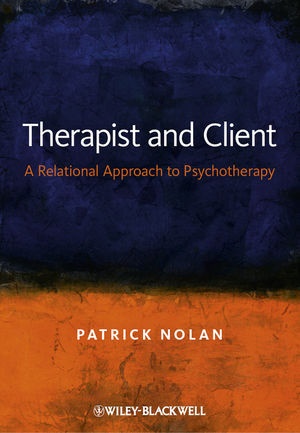Read more
Informationen zum Autor Patrick Nolan is a Psychotherapist and the Director of the Irish Institute for Integrated Psychotherapy. He is co-author of Object Relations and Integrative Psychotherapy: Tradition and Innovation in Theory and Practice (2002) and has written about integrative, psychoanalytic and body psychotherapy in numerous publications. Klappentext Therapist and Client: A Relational Approach to Psychotherapy provides a guide to the fundamental interpersonal elements of the therapeutic relationship that make it the most effective factor in therapy.* Presents the fundamental interpersonal elements that make the therapeutic relationship the most effective factor in psychotherapy* Explores and integrates a range of approaches from various schools, from psychoanalysis to body-oriented psychotherapy and humanistic psychotherapies* Offers clear and practical explanations of the intersubjective aspects of therapy* Demonstrates the pivotal need to work in the present moment in order to effect change and tailor therapy to the client* Provides detailed case studies and numerous practical applications of infant research and the unified body-mind perspective increasingly revealed by neuroscience Zusammenfassung Therapist and Client: A Relational Approach to Psychotherapy provides a guide to the fundamental interpersonal elements of the therapeutic relationship that make it the most effective factor in therapy. Inhaltsverzeichnis Foreword ix Preface xiii Acknowledgements xv Introduction xvii 1 Applying Findings from Infant Research 1 Introduction 1 Intersubjectivity 3 References 24 2 The Interpersonal Relationship 27 Introduction 27 The Evolution of a Relational Approach 28 The Therapist: Self with Other 30 Reflecting on Self and Other 42 Repairing the Relationship 45 References 51 3 Potential Space, Creativity and Play 54 Introduction 54 Intersubjectivity - the Realm of Potential Space 55 The Therapeutic Space 56 Creativity and Play 65 References 84 4 The Intersubjective Experience 86 Introduction 86 Defining and Exploring the Intersubjective Experience 90 References 104 5 The Relational Body-Mind 106 Introduction 106 The Nature of the Relational Body-Mind 109 A Relational Body-Mind Perspective 112 Five Modes of Experience, Function and Expression 114 Taking a Body-Mind Stance 119 Relational Body-Mind Therapy 121 Transference-Countertransference and the Body-Mind 131 'Fragile' Clients 132 References 134 6 Working with Trauma and Fragile Clients 137 Introduction 137 Therapy for the Traumatized Body-Mind 138 Working with Fragile Clients 149 References 157 7 Adapting Therapy to the Client: A Relational Approach 159 Introduction 159 Assessment 163 Creating the Therapeutic Frame 171 Tailoring the Therapist's Stance 174 Choosing a Level 184 Staying Adaptable and Relational 189 Arriving at an Individual Style 192 References 194 Index 197 ...

